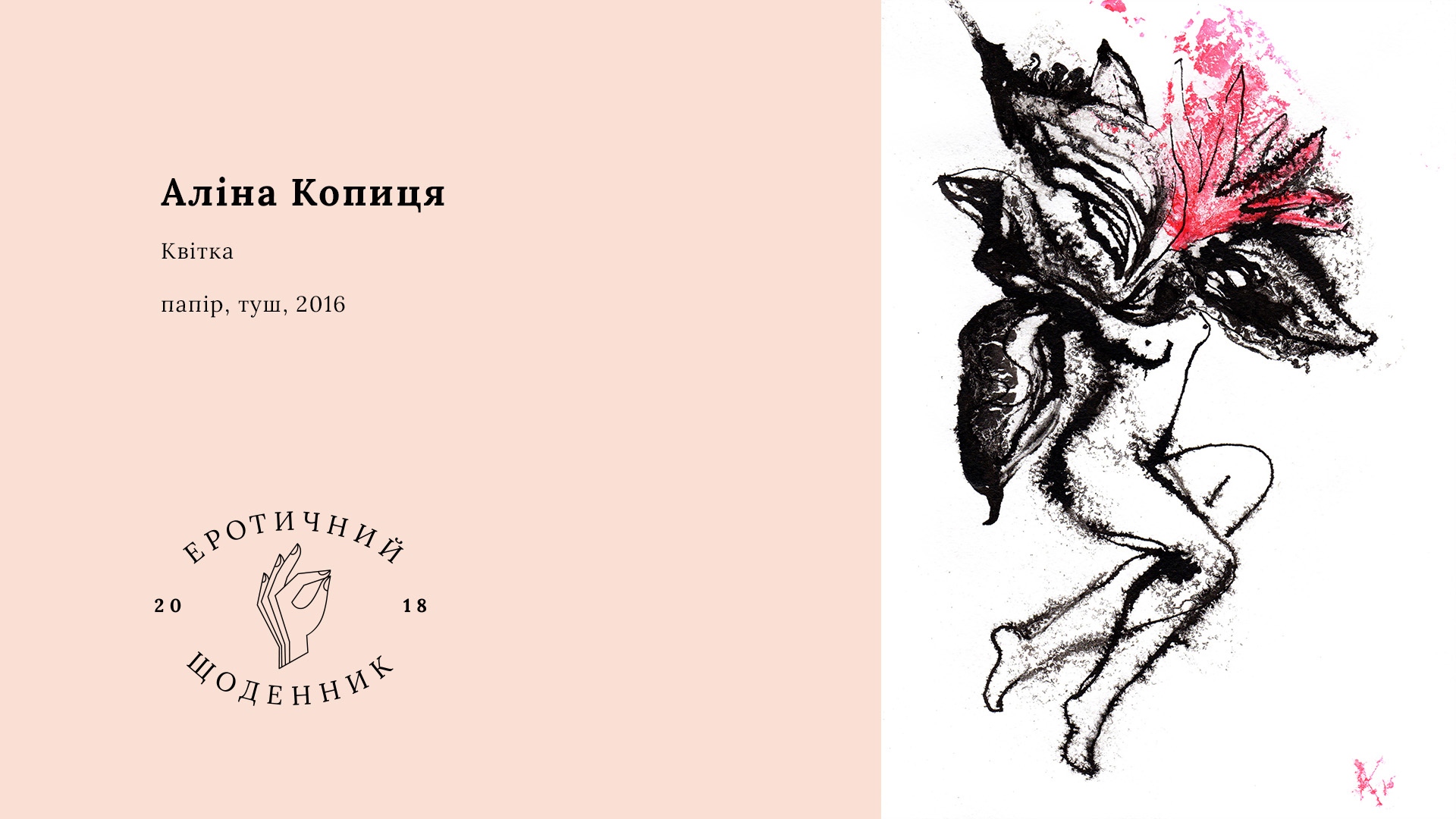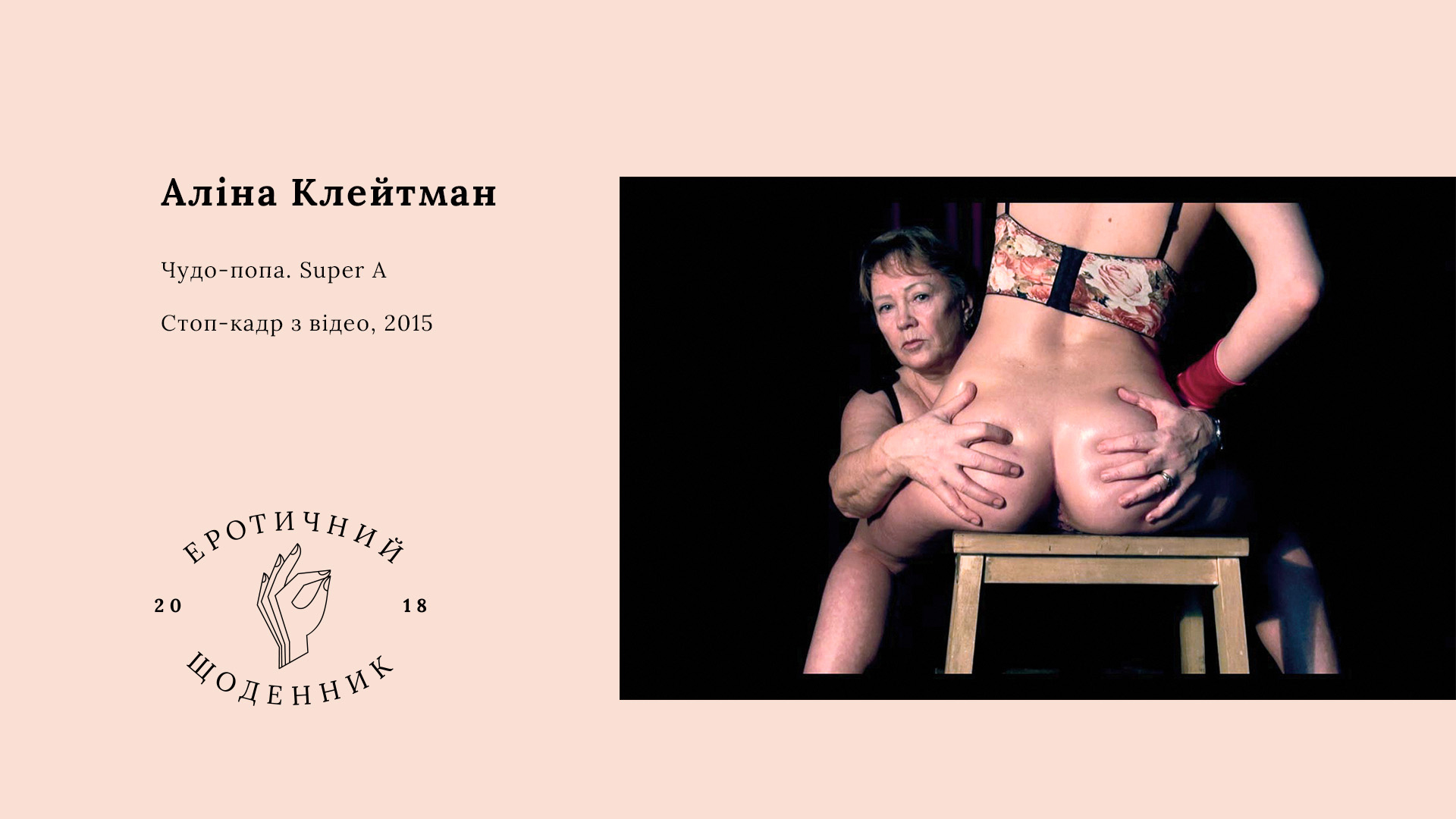
Female Take on Erotica: The Diary of Sexuality
“We first had the idea to create Erotic Diary in 2017. Remember the heated discussions of the Ukrainian Erotic Photography edition (about the photograph of Sasha Kurmaz on the front page — it was seen by some as the objectivation of the female body — Ed.)? The level of hate on the Internet skyrocketed. And then, in a social network, I jokingly offered that people take part in a small self-published brochure. And it was surprising how many people immediately wrote to me about it. In the conversation with artist Alina Kleytman, we developed an idea to create a diary,” the author of the book, Dana Kosmina, says.
Many works published in the book were something that the artists did earlier, while others were taken especially to be included in this collection. The illustrations are published in a way that could have been postcards sent to someone.
Erotic images appear not only inside the book, the important part of it is also the visual solution: the cover of red velvet with a golden stamp briefly and clearly conveys the feeling of physicality. Lera Guevska, designer and author of the book, says more about it: “Our idea was to create a diary with postcard images transformed into an art book format. By adding blank pages, we invite the owners of our books to write, draw and take part in filling the diary in various ways. We chose uncoated paper with a soft color for these pages, and for the pages with texts by authors — various shades of skin color, as all of us are different, as are our stories and baggage of experiences. The cover is done in red velvet with golden stamping on it: a logo with a woman’s hand that offers an invitation into the world of erotic fantasies. I joke that velvet and gold were my erotic fantasy as a designer who normally works in a rather reserved style. The diary is female in all regards, even the equipment used to type the text is called Lora.”


Erotic Diary is about expressions of eros and thanatos in contemporary Ukrainian society. When thanatos has a louder voice, embodied by the war, corporeality and sexuality become something like a peacekeeping mission, the voice on non-violence. The Diary is a successor to the published diaries of Gertruda Stein, Virginia Woolf, and other feminist writers who in different times lived through the horrors of war. Despite the fact that there is no direct mentioning of the war in the book by Ukrainian artists, their visual language cannot be perceived apart from contemporary reality and from thinking about the fact that any history is still being written by men and is viewed in the context of narrative of heroism and liberation.
However, according to Kateryna Mishchenko, the literary editor and the text’s author, this book is not a way to talk about the war or criticize it, but rather an attempt to get away from the militaristic mood and the emphasis on the mobilization of resources for the purposes of war which are common in our society towards a more peaceful course. “This book chooses to start a dialogue on a different topic and thus decrease the degree of violence. Very often, female emancipation projects, the voices of LGBT are in a way a statement of a different view on reality, and in our case this is a non-war reality,” she explains.
“This book chooses to start a dialogue on a different topic and thus decrease the degree of violence.”

“The bigger portion of erotic product that we may observe in the movies and literature — expandig eros to other spheres, to counter the concentration on a body as an object. In love language, such phrases as “conquer”, “win over” are still common. This characterizes the view of erotica as a battlefield, where constantly someone is fighting for someone, the quality, value, and beauty of another person are measured. This book shows a different representation of sexuality,” curator and artist Oksana Briukhovetska says.
Artists often turn to the image of nature, which in itself, according to Briukhovetska, embodies the unity of eros and thanatos. However, you shouldn’t think that the images are limited to traditional depictions of flower heads. The flowers in the book Erotic Diary are flowers kept at home in Valentyna Petrova’s photographs, small field flowers near the ‘bronze’, almost lifeless, body of AntiGonna, bushes that grow at the feet of KotoUtka, or the flower that a female body blooms into in a drawing by Alina Kopitsa.

Erotic Diary is an important publication in many ways. On the one hand, it is an example of the self-organization of artists, on the other — an analytical approach to their own work and the work of others, and also it is a reaction to the surrounding world, including the position of a visual book on the Ukrainian book market. Namely, the possibility of bringing together the format of a book, a diary, and postcards allows for broadening the audience: from those who take interest in Ukrainian art to those who think of the book purely as a diary.
However, one shouldn’t understand the diary format too literally. The work of Ukrainian artists in a subtle way dwells on the same feminist logic that is outlined in one of the most famous works of Virginia Woolf, A Room of One’s Own (1928). Woolf explains why nobody can remember any genius female writers of Great Britain, but many can name male writers. For many women who wrote novels the space of their creative work was limited to their own room, and their notes were diaries in nature — or were perceived as such. That’s why, a diary is a format determined by politics and rules set in society.
For many women who wrote novels the space of their creative work was limited to their own room.
This way or the other, the opportunity to add your own notes allows for starting a dialogue between the audience of the diary and the artists, and for the reader to become a part of the project.

New and best




